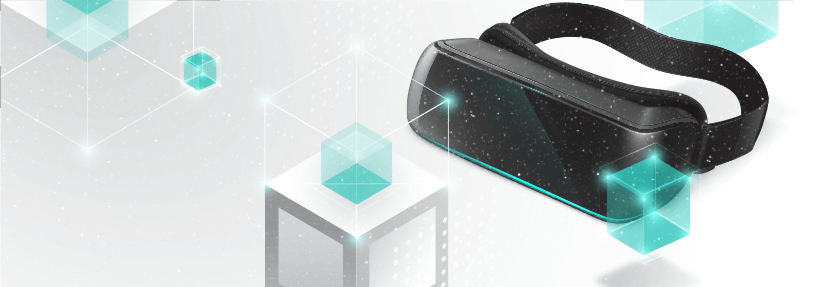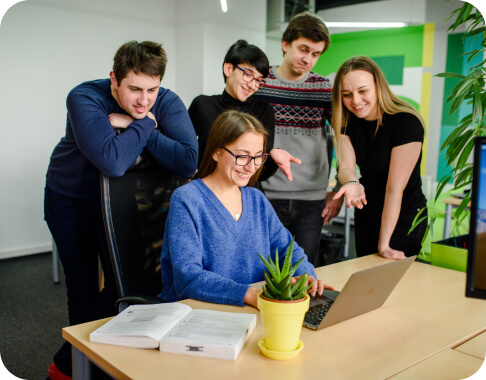Engineering design with AR, VR, and MR: trends 2020
We are blessed to live in an age where “The Matrix” is constantly becoming less like fiction and more like reality. Interactive displays, animate holograms, and virtual 3D models are no longer limited to science-fiction Hollywood movies. They have become a tangible reality.
This article provides a snapshot of the impact of AR, VR, and MR in engineering design in 2020.
What is Augmented Reality?
Augmented reality is an interactive technology that expands the physical world, adding layers of digital information onto it. Does this make sense to you? Think Snapchat. If you have used social media or played video games, you have probably had an AR experience. Mobile applications such as Pokémon Go and Snapchat have brought AR into regular everyday use.
Contrary to Virtual Reality (VR), which entirely replaces the real world with a virtual one, AR appears in direct view with the real world and adds sounds, videos, or graphics to it. AR simply changes the perception of reality.
- How is AR impacting Engineering design
AR is gaining a lot of popularity in engineering design and securing its position as an invaluable asset for almost all engineering specialties. The AR experience is an upgrade from the advanced digital design capabilities of 2D anchored Computer-Aided Design. CAD has been the standard de facto for design engineers over the past few decades, but it was limited in so many ways.
The limitations of this approach to engineering design lie in its inability to visualize the design in 3D fully. Designers can only interact with the 2D design through the monitor. AR liberates the engineering design teams from such barriers, allowing CAD engineers to superimpose a model on the physical world as a hologram. This creates new and more efficient ways to interact, evaluate, and improve the designs.
The use of AR enables design engineers to reduce the duration of the development cycle significantly. AR models are also easy to share due to the availability of numerous free supporting apps.
Using AR to superimpose a CAD model over a physical prototype for comparison has led product quality up an upward trend. A typical example is how Volkswagen leverages AR today in its initial digital designs. This helps the company to identify anomalies between the virtual and physical designs.
Next-gen product designs are going to be reliant on the concept of data-driven designs. And AR is a big part of acquiring this data for insights. One possibility is for AR-enabled products with embedded sensors to gather intelligence on how product users interact with them under a range of real-world conditions. The gathered insights can then appear right on the AR model, paving the way for next-gen product design by giving design teams clearer objectives when it comes to creating products that meet customer needs.

What is Virtual Reality?
Virtual reality (VR), in brief, refers to a replicated environment that a user can interact with through a simulated physical presence. Virtual reality encompasses all immersive experiences materialized through solely real-world content, synthetic content, or even a hybrid of both.
- How is VR impacting Engineering design
In engineering design, virtual reality utilizes 3D modeling tools and visualization techniques to enable design engineers to view and interact with their projects in 3D. The main perk of incorporating VR into the design process is that engineers can spot design flaws and potential risks well before implementation.
VR is creating a safe environment for design teams to observe their projects. It allows to correct or improve their designs before finally starting to work on the final physical product. This significantly saves time and money. High-end graphics, fast refresh rates, and realistic sound and movement immensely increase virtual reality’s ability to depict the fine-grained details of an engineering product, thus maintaining the illusion.
Virtual reality fits right into the beginning of the design cycle. As the design project is reviewed for faults and other design issues, virtual reality takes design engineers through the build and implementation stages with a renewed efficiency.
One of the early adopters of VR in design, Balfour Beatty Rail, employs virtual reality engineering in its rail construction. The rail infrastructure contractor incorporates VR technology during the planning, prototyping, and construction phases for project realization.
Virtual reality reduces costs and speeds up the development process. Design teams can now produce multiple versions of their project prototypes, test, and make adjustments based on the results from a virtual environment. The car manufacturing landscape is one such sector that has embraced VR. This helps eliminate the need to build physical prototypes. As we speak, the next generation of Land Rovers will be reliant on semi-immersive and CAVE systems—with advanced tracking and projection facilities installed at the JLR Virtual Reality Centre in the UK.
What is Mixed Reality?
Mixed Reality (MR) is a term not well defined to most people, and they often mix it up with augmented reality. However, there is an established distinction between the two. While the real-world and the CG content in augmented reality cannot respond to each other.
- How is MR Impacting Engineering design
Mixed reality (MR)—also referred to as hybrid reality—involves the merging of real-world content with an overlay of synthetic content. It helps to create new environments and visualizations where physical and digital objects co-exist and interact in real-time.
There is more to mixed reality than using your Hololens from Microsoft for recreation. Imagine a world where engineers and other professionals can collaborate with their counterparts who are working onsite in real-time.
Upcoming mixed reality tools allow more flexibility for engineers during the design process. They can interact with 3D objects in the form of holograms captured or generated from a separate environment in their physical space. Such technology is creating a bridge between the digital world and the physical one.
- Microsoft Hololens
One of the most popular hardware for mixed reality, Microsoft Hololens, is opening doors for developers and design engineers to build new relationships through products like SketchUp Viewer. This is one of the first apps, especially for Hololens, in efforts to expand the horizons of an existing 3D modeling platform for architects and engineers from Trimble.
Cost savings and shorter development cycles now await users everywhere. With the support of matured 3D graphics, professionals such as civil engineers and manufacturing engineers can now take advantage of virtual reality to design functional projects on their monitors. Investments in CAVE tech mean that design teams can now project virtual images in their physical spaces.
For the first time in design engineering history, user mobility is now actually a reality. Remote user collaborations can have dependable real-time results. In construction, it is now possible for engineers and inspectors to project 4D-design models over the actual structure being built. Onsite inspectors and office-bound engineers can collaborate more effectively and instantly too.

Top 3 AR, VR, and MR Trends in 2020
- Use of AR and MR in training and teaching
AR has got so much to offer in the educational sector. With the advent of AR, educators can easily teach complex subjects. Imagine teaching surgery, aviation, and construction without exposing students to the risk of the real world. The students will get the experience and thrill of their respective fields of interest, from the comfort of the classroom.
Moreover, AR can help students with learning disabilities. Teachers can use AR to make lessons more interactive and interesting, enabling the students to focus on their lessons with fewer distractions.
The US army has already started implementing AR and MR to train soldiers and provide them with real-time data about their environments.
- AR and VR enhanced by Artificial Intelligence
By now, you have probably heard about the huge impact of AI. Coupled with AR, AI will enable the former to interact with the physical environment in a multidimensional way and create immersive experiences.
For instance, during online shopping, AI will be able to analyze customer data and provide a more personalized experience. For instance, it will enable customers to see a 3D product that matches their preferences instantly.
- Apple to finally launch AR Glasses in 2020
Rumors have it that Apple will finally launch its long-anticipated AR glasses in mid-2020. The AR glasses will display texts, emails, maps, and games directly onto the user’s field of vision. And also wirelessly connect to other Apple devices. Besides, Apple, other tech giants such as Facebook, are also partnering with third-party companies like Ray-Ban, to produce similar AR tech.
Over to you
What if you could…shop for that new shirt and try it on without leaving the confines of your home? Or take a tour of the apartment in Dubai you want to rent this summer without leaving your country. Try that new coffee table and see how it blends with the rest of your furniture before bringing it home?
You have probably encountered a few of these scenarios in your life, one way or another. Now imagine being able to do all these things without having to visit any of those places. AR, VR, and MR can make this a reality!
In conclusion, the world of design engineering has gotten more interesting in the past decade. Early adopters of these new trends will gain a competitive edge over their peers, still hanging onto traditional 2D models.

